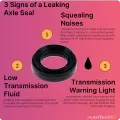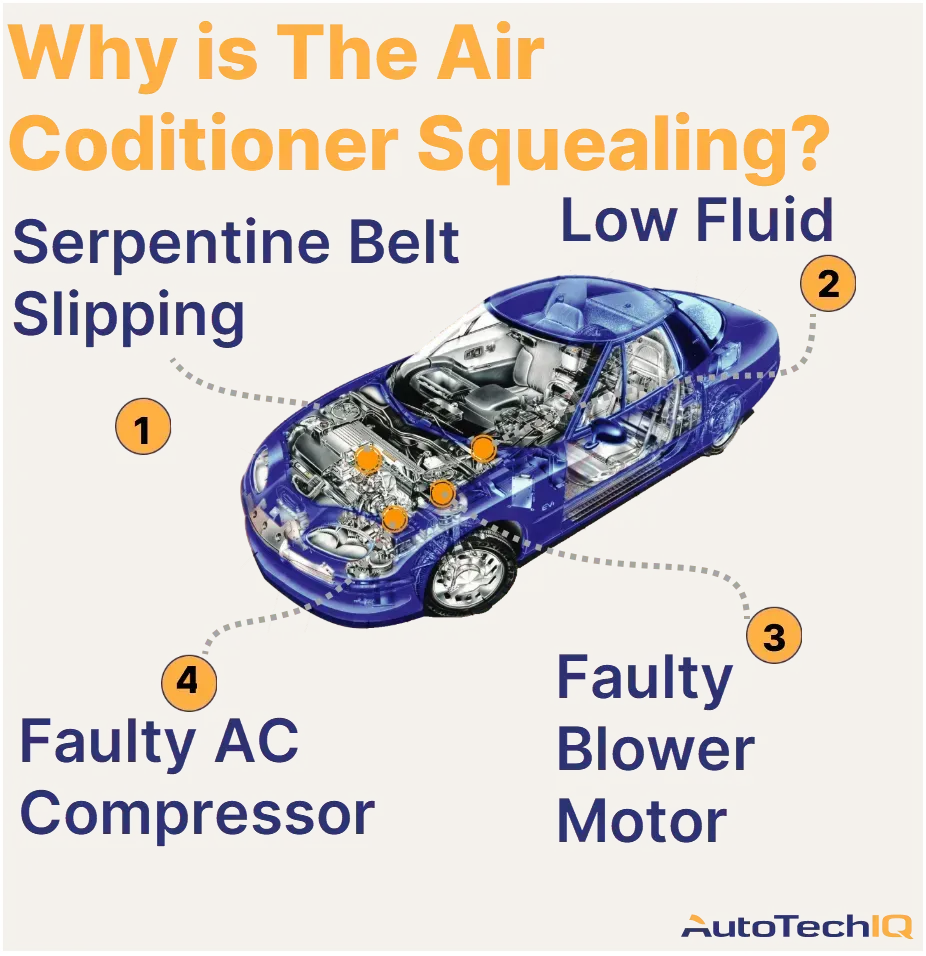
The squealing is caused by a loose serpentine belt, which is the belt that rotates the AC compressor’s pulley. This belt starts spinning when the AC is active, but if the belt is loose or damaged, it’ll wobble and move erratically, causing a squealing sound.
The noise can also result from faulty AC compressor bearings, which might be misaligned or cranky. The bearing is supposed to rotate with the serpentine belt, but if the bearing has the aforementioned issues, it can make squealing sounds.
Watch out: The squealing noise can mean serious electrical issues if it’s related to the serpentine belt. Therefore, ignoring the sound and avoiding vehicle maintenance can result in expensive repairs down the road.
The car isn’t working properly if it’s making a squealing noise; if you’re hearing this type of noise when the AC is on, get a vehicle check-up. Here are some of the main risks possibly related to it:
-
Serpentine problems: The serpentine belt could be misaligned, getting improper belt tension, or out of place. This means the belt is either loose or banging against other components. Since the belt is vital for many of the vehicle’s systems, this could lead to various problems beyond an AC squealing or hissing noise. Moreover, a loose serpentine belt can damage nearby components.
-
Electrical Issues: A serpentine belt works alongside the alternator. Therefore, the belt is vital for many electrical accessories in the vehicle. A slipping belt leads to problems in the engine cooling system, the AC, the water pump, the power steering, etc.
-
Health Concerns: The serpentine belt is made of rubber and works under the vehicle’s hood. Many hot car parts surround the belt, which is close to the engine. This means that the belt can slip out of place and burn itself on various nearby components. Consequently, the belt poses safety risks like releasing toxic fumes and even fire hazards.
The most common causes for a car AC squealing
Here are the most common issues causing your car AC to squeal:
Frequently Asked Questions
Q: How do I stop my air conditioner from screeching?
To stop your air conditioner from screeching, first, check and tighten or replace the serpentine belt if it’s worn or loose, as this is a common cause of the noise. Inspect the AC clutch and compressor for any signs of wear or failure, and ensure it’s functioning properly. Also, notice if there's cold air coming from the vents; if the vents aren't blowing cold air, there might be internal AC damage. If the refrigerant levels are low, have them topped off by a professional to reduce strain on the system.
Q: Can you replace a serpentine belt yourself?
You can replace a loose belt yourself if you have enough automotive knowledge and the right tools. The process involves locating the belt routing diagram (usually found under the hood or in the vehicle's manual), releasing tension on the belt using a wrench or tensioner tool, removing the old belt, and then threading the new belt according to the diagram. After placing the new belt, you'll need to reapply the tension by adjusting the tensioner. While it’s a relatively straightforward task, it’s important to ensure the belt is properly aligned with all pulleys to avoid future issues. If you're not comfortable doing this, it's best to have a professional handle the replacement.
Typical fixes to address the cause(s)
These are typical processes and repair services that fix a burning rubber issue
-
Serpentine Belt Replacement
-
AC Compressor Replacement
-
Air conditioning system flush
-
Blower Motor Replacement
The most common cause: Slipping Serpentine Belt
The most common reason for a car making squealing noises is because of a slipping serpentine belt. If the serpentine belt loosens up or slips out of place, it’ll spin oddly, banging up and rubbing against nearby components. This wobbly movement in the serpentine belt leads to squealing noises.
-
Origin of the sound: Under the hood
-
Symptoms it causes: Apart from the squealing noise you might notice AC malfunction, electric accessories failing (radio, cabin lights, headlights, etc.), and engine overheating.
-
High risk of priority: The serpentine belt is vital for the vehicle’s electrical system, as it works together with the alternator. If you keep running the car with the belt misaligned or out of place, it’ll lead to more failures and critical electrical issues.
What exactly is a serpentine belt?
The serpentine belt, also called a multi-rib or poly-v belt, is a long, looped belt made of rubber that’s under the vehicle’s hood. The belt runs along grooves on pulleys attached to the alternator, power steering pump, air conditioner compressor, and water pump (in some cases).
-
Key function: In short, the key function of the serpentine belt is to receive engine power and start spinning, rotating the pulleys of components like the alternator, power steering pump, air conditioning compressor, and sometimes the water pump. This rotation feeds the electrical system and helps power your car’s A/C, radio, accessories, lights, etc.
Although the serpentine belt commonly causes squealing noises in a vehicle, do not assume it’ll be always the case. Many other car parts can lead to a squealing sound when they fail.
Go safe: Ask for a mechanic to inspect your vehicle to track the squealing sound’s location and how it affects other components. Many shops do transparent vehicle inspections and lay out your options after investigating your vehicle’s conditions.
What’s a vehicle inspection? It’s “detective work” on your vehicle, checking its systems to find if anything is preventing the car from working as expected. In this case, mechanics examine different parts of your vehicle to track where the squealing noise is coming from and what’s causing it. They’ll also check the condition of components during their inspection, noting which are causing the problem and which got affected by it, recommending to replace them in order of priority.
Transparency example in a serpentine belt service
Let’s see how a vehicle inspection defines the car service needed to fix a serpentine belt problem causing squealing sounds.
In this example, the technician found that the serpentine belt had slipped out of place. The serpentine belt is a critical component under a vehicle's hood; it uses engine power to spin and rotate the pulleys of components like the alternator, power steering, A/C, and more. This leads to electricity.
The serpentine belt is connected to the water pump in most vehicle engines. In this service example, the mechanic discovered that the slipping serpentine belt was overheating the water pump pulley and generating squealing noises. The loose belt was also erratically spinning the compressor pulley, risking more damage to the compressor clutch and AC system. This means the water pump is overheating and malfunctioning.
The expert visually inspected the water pump pulley and found it had melted; probably due to the serpentine belt overheating it with its wobbly spinning.
With these findings, the technician will also take a look at the water pump and belt tensioner. If the serpentine belt has been spinning incorrectly for too long, it might have caused damage to nearby pulleys and components. Then, they'll plan a fix for the whole system.
The image below shows the melted pulley and belt, causing the squealing noise. Hence, replacing both parts is crucial to avoid overheating failure.

In this case, the mechanic put the “Immediate Action” tag on the serpentine belt and water pump pulley. They also recommended replacing surrounding components that got worn out.
Other news
-
Car is Squealing When Driving
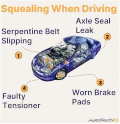
-
What is Preventative Maintenance and What Are The Benefits of it?

-
JobViewIQ - DVI Process Training - Part of the Auto Care Alliance Benefits

-
7 Signs of AC Pulley Issues
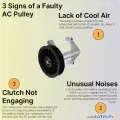
-
7 Signs of Clogged AC Components
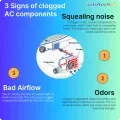
-
How Much Does a Transmission Fluid Change Cost?

-
7 Signs of a Leaking Axle Seal
